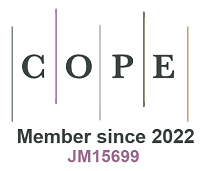Noble metal free chromophore-catalyst assembly constructed by atomic layer deposition of a stable dye-sensitized photosynthesis cell photocathode for CO2 reduction
Abstract
Stable dye-sensitized photoelectrosynthesis cells (DSPECs) relying on non-precious metals for CO2 reduction to solar fuels represent a promising yet challenging strategy. Herein, a noble-metal-free photocathode (FTO|NiO|P1|TiO2|CotpyP|TiO2) is engineered via atomic layer deposition (ALD)-assisted layer-by-layer assembly, integrating a triphenylamine organic dye (P1) and cobalt terpyridine catalyst (CotpyP) within TiO2-protected NiO films. Under simulated sunlight, the optimized system achieves a CO turnover number of 103 at -0.55 V vs. RHE with a stable photocurrent density of -129.8 µA cm-2 over 7,200 s, maintaining a syngas H2/CO ratio of 2.0-a 17-fold lower than CotpyP-free counterparts. ALD-deposited TiO2 layers suppress catalyst leaching (< 10% loss) while enhancing interfacial charge transfer, yielding an apparent quantum yield of 60% at 450 nm. Control experiments confirm the synergistic roles of P1 (light harvesting) and CotpyP (CO selectivity). This strategy for synthesizing stable non-precious-metal photoelectrode provides a new direction for the development of chromophore-catalyst photocathodes.
Keywords
Photoelectrochemical, CO2 reduction reaction, non-precious metal catalyst, atomic layer deposition
Cite This Article
Hou J, Peng Y, Wang H, Chen B, Guo X, Wang D. Noble metal free chromophore-catalyst assembly constructed by atomic layer deposition of a stable dye-sensitized photosynthesis cell photocathode for CO2 reduction. Chem Synth 2025;5:[Accept]. http://dx.doi.org/10.20517/cs.2025.76












